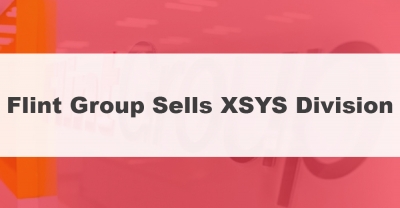There are a few technologies and methods to produce artificial UV light, the main purpose of this light radiation is to be used for UV Curing, which is a high speed curing process in which high intensity ultraviolet light is used to create a photochemical reaction that instantly cures or bonds inks, adhesives, resins, coatings and other materials.

Massivit 3D printer uses UV curing resin and UV-LEDs to create 3D objetcs. (FLAAR Archive)
The main advantage of curing with UV-light is the speed at which materials or products can be processed, this advantage is especially important since the positive effect it has on production costs, by helping reduce productions times, thus helping increase productivity and reduce costs. Decreasing the curing or drying step time in a process can help reduce flaws and errors, mainly reducing the time that an ink or coating spends wet, which is one of the most critical steps and the most likely to produce errors. This can increase the quality of a finished item, and potentially allow for greater consistency.
Types of UV radiation
Ultraviolet light is a particular portion of the light spectrum, there are different types of UV wavelengths and they have specific applications, commonly the most used ultraviolet radiation (UVR) is categorized from 200nm to 400nm for UV A, B and C; UVR can be more widely defined as light radiation between 10 and 400 nanometers as specified by a more comprehensive subdivision by the ISO Standard ISO-21348, in which the UV wavelength is categorized in 9 different ranges.

Different Types of light radiation, including the visible spectrum. (spacenvironment.net)
Types of UV curing lamps
There are two general types of UV lamps available, broad-spectrum metal arc UV lamps and LED-based UV curing lamps. In contrast, LED UV curing lamps have a consistent output, no bulbs to replace and no warm-up time, among other advantages.
The standard broad-spectrum metal UV lamp has been the norm within the industry for many years, and several sub-categories exist for specific applications.
LED-based UV lamps will have a quite narrow spectral output based around a single wavelength e.g., 280nm, 365nm, 385nm, 395nm, and higher.
High Pressure UV Curing lamps (HP-UV) (also known as Metal Halide lamps), typical HP-UV curing lamps (Mercury) have short wavelength outputs that peak at 254nm and 365nm. A basic mercury HP-UV lamp will emit energy in both these ranges, but its strongest emission is in the short wavelengths.
To alter the spectral output and access these additional radiation peaks – additive lamps are created by dosing the lamps with heavy metal compounds, this is called “doping”. Commonly used additives for HP-UV curing lamps are Gallium- doping (400 -450 nm) and Iron-doping (350 – 400 nm). Other additives are available dependent on the specific application.

HP-UV curing lamps are normally manufactured from high-clarity, vitreous silica, quartz crystal. (skrmengineerings.com)
Vacuum-sealed medium pressure UV lamps (MP-UV or MP-HO) lamps are mainly manufactured for disinfection applications. MP-UV lamps are used in a variety of applications from curing (UVA) to microbial disinfection (UVC).
MP-UV lamps are made from high-quality quartz crystal, hermetically sealed using molybdenum foil within the hard quartz capillary, later pure tungsten pin electrodes are added with an over-wind of throated tungsten, each lamp is pumped and filled with an inert Argon gas in a precise process ensuring total accuracy of fill pressure and mercury content. The lamp is then completed by the use of either a metal or ceramic base and suitable electrical termination.

MP-UV lamps are generally used for water or air disinfection (vgepro.com)
Low Pressure UVC Amalgam Curing lamps (LPA-UV lamps) are perfectly suited for curing cationic based inks, cationic inks are generally an epoxy based resin that is cured by UV lamps. The wavelength of UV radiation is required to stimulate the photo initiator. The cure rate for these inks depend upon the specific ink’s formulation, light source and initiator contents.

High-efficiency low-pressure mercury lamps offer 30% to 60% higher output at a spectral output of 254 nm and do not emit ozone. (heraeus.com).
UV Light-emitting diodes (LEDs) can be manufactured to emit radiation in a specific wavelength range. LED UV curing lamps offer many advantages over conventional UV curing systems including long-life, cool temperature cures, no warm up times, constant intensity and reduced power consumption.
Curing equipment based on LEDs can achieve uniform frequency and intensity output for consistent cures, facilitating superior process control, increased manufacturing throughput and lower operating costs. LED UV light curing offers several significant advantages over conventional arc UV sources, however LED UV curing lamps feature narrower wavelength spectrum emission than that of conventional equipment, so non-standard or special wavelength requirements may not be cheap to manufacture or sometimes even possible to find.

LEDs are cheaper than mercury bulbs, lasting for several years and consuming less power (flaar archive)
By having a clear understanding of the UV curing process and the technology already available, manufacturers can make educated selections to optimize their process.
The majority of UV curing inks begin curing when exposed to the correct light, and will stop if the light is removed, so it is important to ensure a full cure is achieved in the exposure process.
UV lamps can be specifically matched to special or "non-standard" inks or coatings with different photoinitiator sensitivities and activation wavelengths such as UV LED inks.














